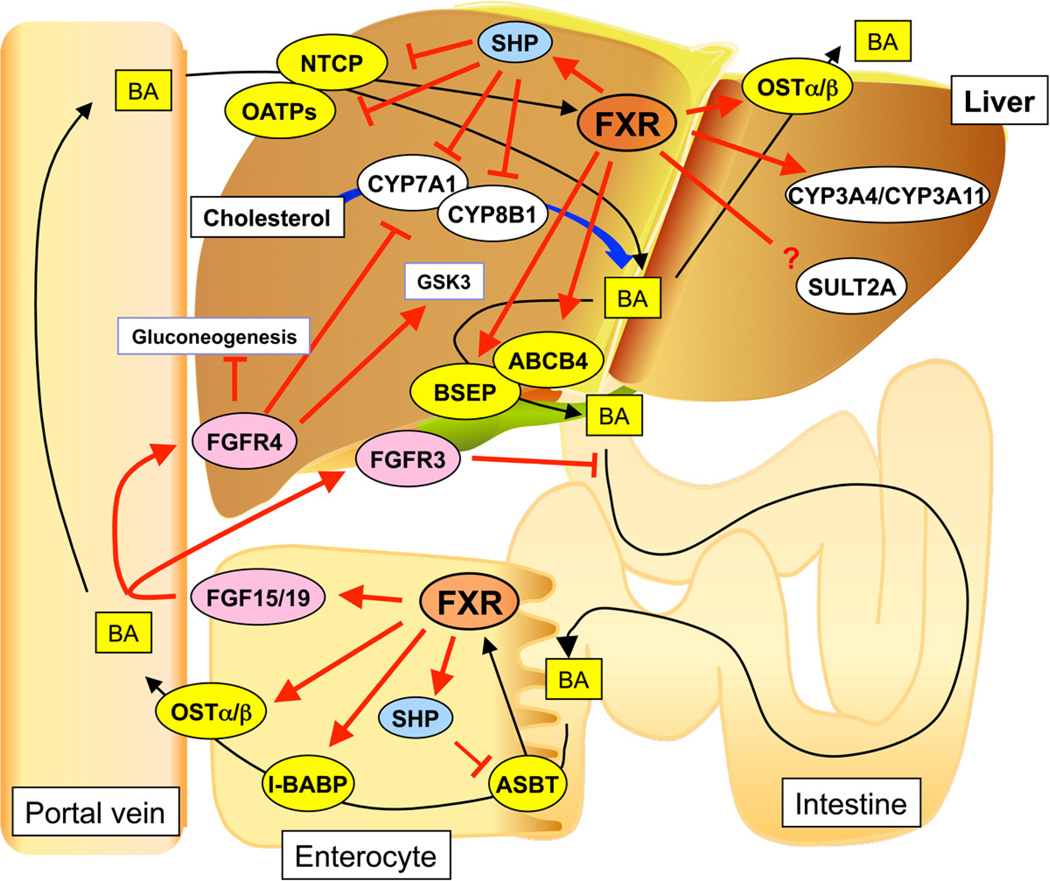Figure 3.
Major roles of FXR signaling in the enterohepatic system. FXR accelerates bile acid export from liver through induction of BSEP and ABCB4 expression and decreasing bile acid uptake to liver by the suppression of NTCP and OATPs expression via hepatic FXR-SHP signaling, decreases bile acid absorption at the intestine through suppression of ASBT via FXR-SHP signaling, and attenuates cholesterol metabolism/bile acid synthesis by suppression of CYP7A1 and CYP8B1 expression via the hepatic FXR-SHP and intestinal FGF15/19 pathways. Thus, FXR action leads to decreased bile acid pool size. Intestinal FXR-FGF15/19 signaling decreases hepatic glucose metabolism through FGFR4 and induces gallbladder filling through FGFR3.

